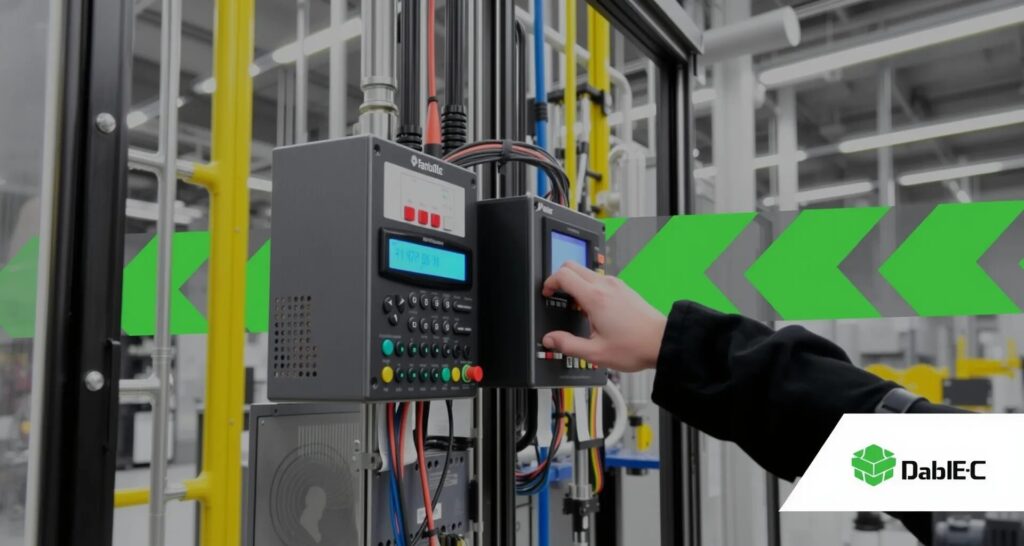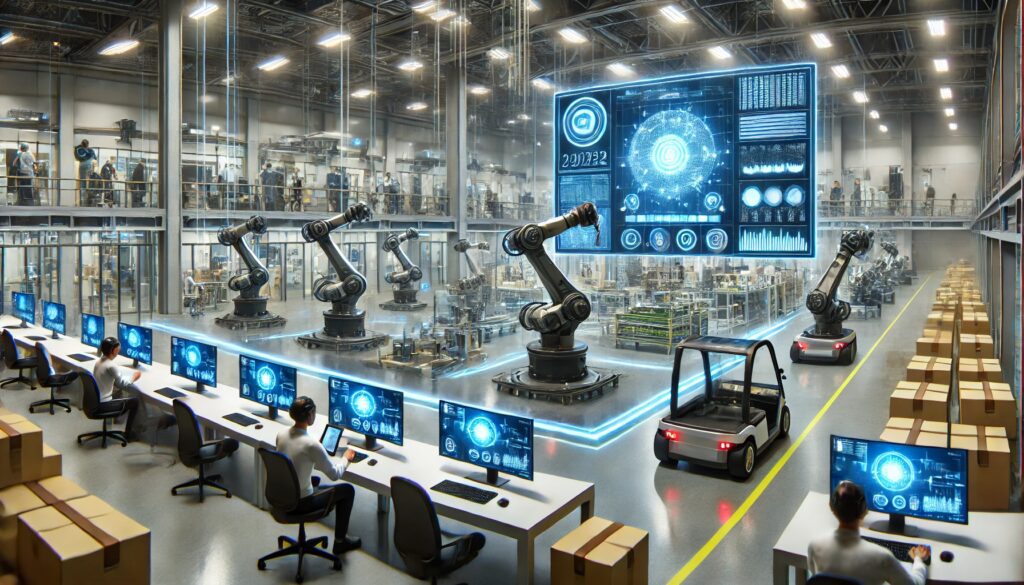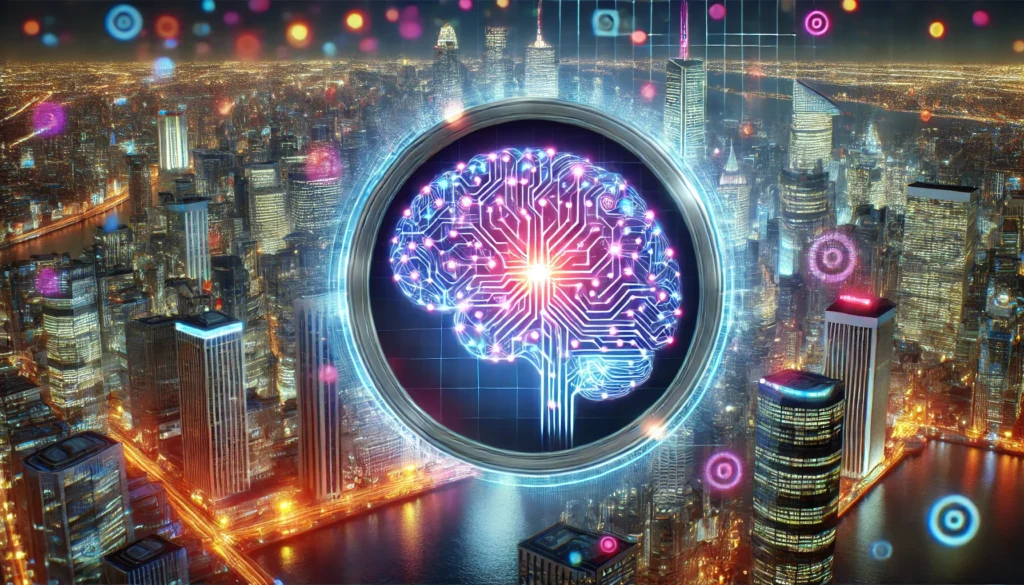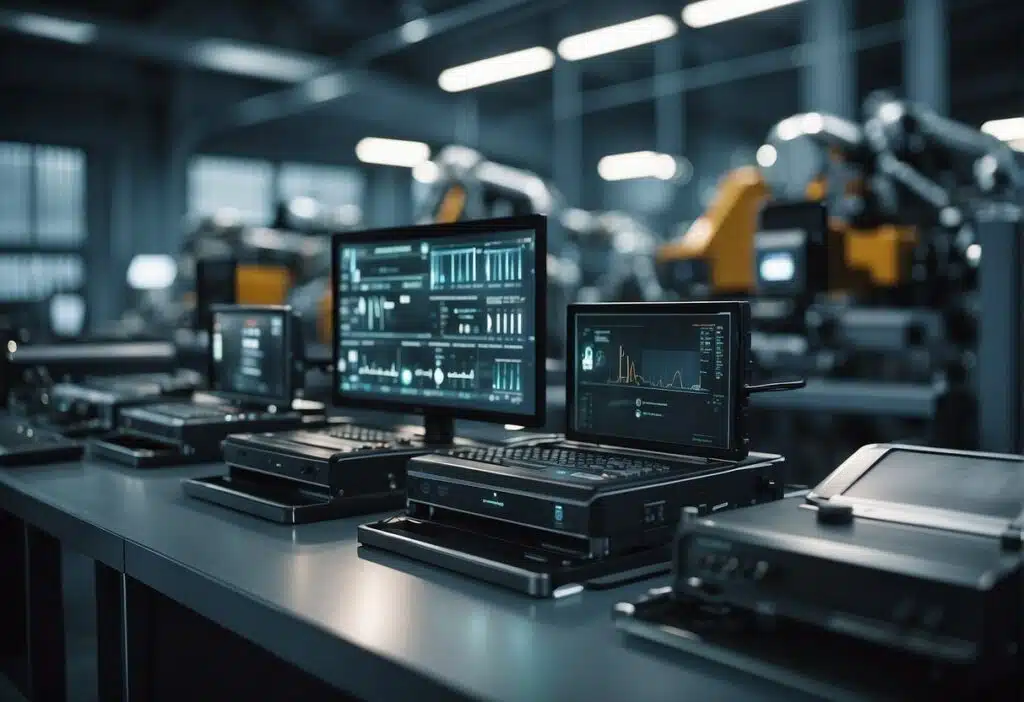
What Are Muscle-Powered Robots in Wearable Tech?
Imagine wearing a suit that mimics the strength and endurance of human muscles. No, it’s not straight out of a sci-fi movie. This is real-life technology, and it’s starting to shape the future of physically demanding work. Muscle-powered robots, or wearable exosuits, are designed to enhance human capabilities—giving workers superhuman-like abilities in environments that require significant physical effort.
At their core, these suits integrate robotics with biomimicry, using materials and sensors that respond like muscles, contracting and expanding to assist the wearer. Think of them as a next-gen tool belt, only instead of carrying hammers and nails, they help carry the load for your arms and legs.
The Growing Need for Exosuits in Physically Demanding Jobs
From construction sites to emergency response units, some jobs simply demand more than the human body is designed to handle. Lifting, pulling, bending, and carrying heavy loads day after day takes a toll, leading to injuries, fatigue, and long-term damage. The need for solutions that support workers—without adding strain—is greater than ever.
Enter muscle-mimicking exosuits. These wearable robotics can be game-changers, offering support where it’s most needed. Imagine a construction worker who can lift heavy materials all day long with ease, or an emergency responder who has the stamina to carry out multiple rescues without breaking down. By reducing physical strain, these suits aim to increase productivity while minimizing the risk of injury.
How Muscle-Mimicking Robotics Enhance Human Strength
The secret sauce of muscle-powered robots lies in their ability to work with the human body, not just for it. Exosuits are packed with intelligent sensors that analyze the wearer’s movements and provide just the right amount of assistance. They’re designed to mirror the natural motion of muscles—contracting and expanding in sync with the body’s movements.
This seamless integration means workers aren’t just stronger; they’re more efficient. There’s no need to overcompensate for weakness or struggle to maintain form during repetitive tasks. With the suit doing some of the heavy lifting (literally), the body can focus on performing the task with precision and less fatigue. Exosuits boost endurance, enabling longer work hours with fewer breaks.
Boosting Productivity with Wearable Robotics in Construction
In construction, where lifting heavy materials, climbing scaffolding, and repetitive movements are daily routines, muscle-powered exosuits could revolutionize how work is done. Imagine fewer sick days due to strain injuries and a more productive workforce with less downtime. Workers using exosuits could carry heavier loads with fewer trips, reducing overall project time.
Not only do these suits increase productivity, but they also enable workers to maintain their energy throughout the day. Fatigue-related accidents, which are a common issue on construction sites, could significantly decrease as well. By lightening the load and allowing workers to move more fluidly, exosuits are poised to become an invaluable asset in construction.
Exosuits for Emergency Responders: A Game-Changer?
Now, imagine a firefighter rushing into a burning building or a paramedic lifting an injured patient from a wreck. These jobs demand split-second decision-making, but they also require immense physical strength. Muscle-powered exosuits are starting to gain attention in the field of emergency response, where every second counts and physical endurance can mean the difference between life and death.
For emergency responders, exosuits could enable them to carry out multiple rescues without the physical exhaustion that comes from heavy lifting or prolonged effort. The technology could empower them to move faster, lift more, and carry out dangerous tasks while staying focused and sharp, not worn out and fatigued.
Preventing Workplace Injuries with Muscle-Powered Exosuits
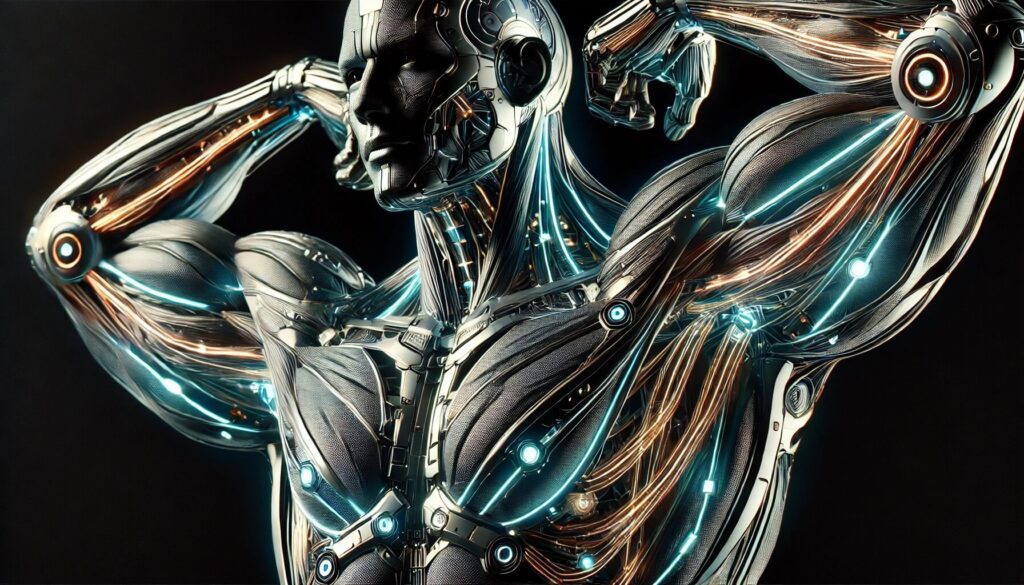
Workplace injuries are a persistent issue, especially in industries like construction, manufacturing, and emergency response. These physically demanding jobs often lead to muscle strains, joint injuries, and long-term back problems. The integration of muscle-powered exosuits could be a revolutionary step toward reducing these risks.
By mimicking the natural movements of the body and providing targeted support, exosuits help workers maintain proper posture during heavy lifting, reducing strain on critical areas like the back, shoulders, and knees. This extra support can prevent the overexertion that typically leads to injury, allowing workers to perform tasks safely even after long hours. In fact, exosuits could extend careers, enabling people to stay active in their professions without fear of injury or burnout.
The Science Behind Muscle-Mimicking Robotics
At the heart of muscle-powered robotics lies a combination of biomechanics, engineering, and biomimetic technology. These systems often use soft robotics, flexible materials, and pneumatic or hydraulic actuators that simulate human muscle contractions. Unlike rigid exoskeletons, which may feel cumbersome, muscle-powered suits offer fluidity of movement, making them much more comfortable for extended use.
The exosuit’s sensors and actuators detect when a worker is lifting or carrying something heavy, automatically applying extra force where needed. By distributing the load more evenly across the body, these suits reduce the likelihood of muscle fatigue or damage. The ultimate goal is to create a seamless interaction between man and machine, where the wearer feels as though the suit is an extension of their own body.
Can Exosuits Improve Worker Safety in Hazardous Environments?
Hazardous environments, such as construction sites, disaster areas, or chemical plants, pose significant risks not only due to the tasks involved but also because of the surroundings. Workers in these settings need to be alert and physically prepared at all times. Muscle-powered exosuits can be a lifesaving asset here, not just because they enhance strength but because they improve stamina and balance in challenging conditions.
For instance, in environments with uneven terrain or dangerous debris, wearing an exosuit can help workers maintain balance while carrying heavy loads. The exosuit provides stability and traction, reducing the chances of slips, trips, or falls. Additionally, in industries like nuclear energy or firefighting, exosuits could provide workers with the stamina to operate safely for longer periods, enhancing their ability to respond quickly in emergencies.
Are Muscle-Powered Exosuits the Future of Heavy Lifting?
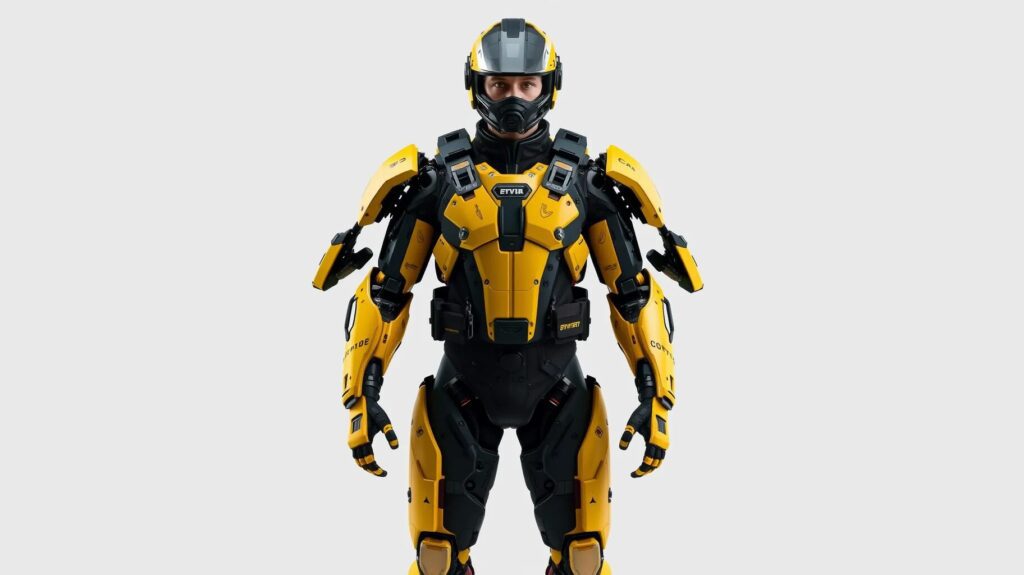
It’s easy to imagine a future where heavy lifting without an exosuit becomes the exception, not the rule. In industries where lifting and moving materials are a constant, muscle-powered exosuits could soon become a standard tool. As technology improves, these suits are becoming more lightweight, more comfortable, and increasingly affordable.
The benefits aren’t just physical; mental strain is reduced as well. Workers can focus on their tasks without worrying about injury or fatigue. This peace of mind contributes to a healthier, more motivated workforce, allowing for more efficient operations across the board. The time saved from fewer injuries and faster task completion could translate to significant financial benefits for companies.
Advancements in Muscle-Mimicking Technology: What’s New?
In the ever-evolving world of wearable technology, the most exciting advancements are taking place in the field of muscle-mimicking robotics. Recently, engineers have developed new materials that respond even more like human muscle fibers, offering smoother motion and greater precision. This new generation of exosuits uses advanced sensors that can not only track movement but anticipate the wearer’s next step, providing support before the muscle even contracts.
Artificial intelligence (AI) plays a crucial role in these advancements. AI-powered algorithms allow the exosuit to learn and adapt to the unique movements of its wearer, creating a customized experience that improves with use. This adaptive technology means exosuits could soon be capable of not just supporting human movements but optimizing them, enhancing both strength and speed in real time.
Real-Life Applications of Exosuits in Industry
Muscle-powered exosuits are already being tested and implemented in various industries. Manufacturing is one of the primary sectors seeing the benefits of these suits, where workers are often required to lift, bend, and stretch repeatedly throughout the day. Companies like Ford and Hyundai have begun integrating exosuits into their factories, reducing worker fatigue and injury, and improving overall productivity.
In logistics and warehousing, exosuits help workers lift heavy packages and maneuver them more efficiently. Tasks that typically require multiple workers can now be handled by one person wearing a suit, streamlining operations. Additionally, emergency responders and disaster relief workers use exosuits to access difficult terrain, carry heavy gear, and transport injured individuals to safety. These real-world applications highlight just how transformative muscle-powered exosuits can be across industries.
Overcoming Challenges in Wearable Robotics for Workers
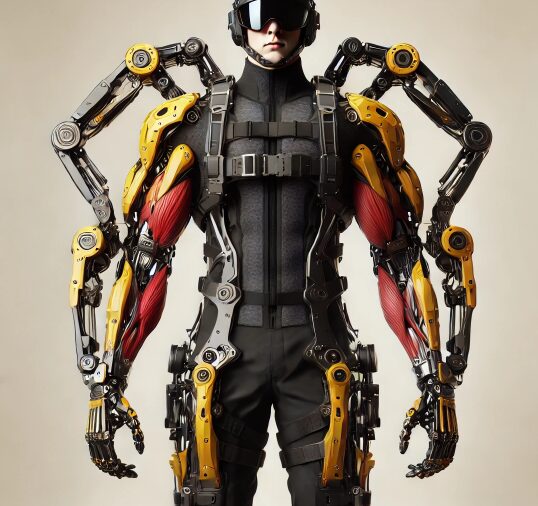
While the promise of muscle-powered exosuits is exciting, there are still challenges to address. One major issue is the cost of developing and manufacturing these high-tech suits, making them less accessible for smaller companies or individuals. Additionally, comfort is a crucial factor. Workers need to wear these suits for extended periods, so ensuring that they are not bulky or restrictive is a major focus of ongoing development.
Battery life is another hurdle. Exosuits need to be lightweight yet powerful, which creates a constant balancing act between power supply and efficiency. As technology advances, engineers are working on developing more durable and lightweight batteries that can keep the exosuit running for longer periods without needing frequent recharging.
The Role of AI in Muscle-Powered Exosuit Design
Artificial intelligence (AI) has become a key component in the design and functionality of muscle-powered exosuits. AI-driven systems help these exosuits understand the wearer’s movements and adapt in real-time. For example, if a construction worker suddenly shifts their position or lifts a heavier load than expected, the AI system can instantly adjust the suit’s support to compensate for the increased strain.
This intelligent responsiveness is critical for creating a seamless experience. AI technology is also being used to fine-tune the exosuit to each individual worker, creating personalized settings that learn and adapt to the user’s unique way of moving. As AI continues to improve, we can expect even more intuitive and powerful exosuits that feel like an extension of the human body.
What Does the Future Hold for Muscle-Powered Wearable Tech?
The future of muscle-powered wearable technology looks incredibly promising, particularly in industries where physical labor is essential. As technology continues to evolve, these suits will become more compact, affordable, and efficient. In fact, experts predict that in the next decade, exosuits could be a standard part of the workforce toolkit in industries ranging from construction to healthcare.
We may also see exosuits making their way into more mainstream applications, such as aiding those with disabilities or helping the elderly maintain their independence. These suits could offer support to anyone in need of mobility assistance, broadening the scope beyond traditional heavy labor industries. With further advancements in materials, AI, and power systems, muscle-powered wearables are poised to reshape how we think about human capabilities.
Can Exosuits Transform Physical Labor Across Industries?
The potential for muscle-powered exosuits to transform physical labor is undeniable. From construction sites to agriculture, these wearable robots could significantly reduce the physical strain on workers while simultaneously increasing efficiency and productivity. By automating the more strenuous aspects of physical tasks, workers can focus on precision, safety, and creativity.
Imagine farmers using exosuits to work longer hours without the exhaustion typically associated with labor-intensive tasks, or miners safely navigating difficult environments with increased strength and agility. The possibilities are vast, and as these suits become more accessible, we may witness a complete overhaul of how manual labor is performed.
Are Muscle-Powered Robots the Solution to Job-Related Fatigue?
One of the most intriguing aspects of muscle-powered exosuits is their potential to combat job-related fatigue. Fatigue is a leading cause of workplace injuries and accidents, often resulting from long hours of repetitive movements or heavy lifting. By offloading a significant portion of the physical strain to the exosuit, workers can maintain energy levels and stay focused for longer periods.
This reduction in fatigue doesn’t just lead to fewer injuries; it also boosts mental clarity and overall job satisfaction. Workers can feel more energized and capable, reducing the emotional and physical toll that often comes with demanding jobs. In this way, muscle-powered robots aren’t just transforming how work is done—they’re transforming the well-being of workers, allowing them to thrive in their roles with less risk of burnout.
Balancing Innovation and Affordability in Wearable Exosuit Development

As muscle-powered exosuits inch closer to mainstream adoption, affordability remains a crucial concern. High-tech suits, outfitted with sensors, AI, and biomimetic materials, come with steep development costs. For companies with large workforces or tight budgets, the price of implementing this technology could seem daunting, limiting its accessibility to only larger corporations or wealthier industries.
However, as demand increases, the cost of production is expected to decrease. Manufacturers are exploring more cost-effective materials and simplifying the design without compromising performance. Government initiatives and workplace safety incentives could also drive the mass adoption of exosuits by making them more financially viable for businesses in need. This balancing act—between cutting-edge innovation and practical affordability—will determine how quickly these suits reach everyday workers across various industries.
The Long-Term Benefits of Muscle-Powered Exosuits
When considering the long-term benefits of muscle-powered exosuits, the potential cost savings become apparent. While the initial investment may be high, the reduction in workplace injuries and the increase in productivity could ultimately lead to significant savings for companies. Fewer injuries mean lower healthcare costs and fewer days lost to sick leave or recovery time. Additionally, workers who experience less fatigue and fewer injuries are more likely to remain loyal to their jobs, leading to better employee retention and reducing the cost of hiring and training new staff.
There’s also a long-term benefit in terms of sustainability. Workers using muscle-powered exosuits may be able to work well into their later years without the typical wear-and-tear that comes with physically demanding jobs. This technology has the potential to prolong careers, which could have a ripple effect in industries struggling with labor shortages.
Exosuits as a Tool for Gender Equality in Physically Demanding Jobs
One unexpected yet promising advantage of muscle-powered exosuits is their potential to level the playing field in industries historically dominated by men. Physically demanding jobs, such as construction, firefighting, and manual labor, often require strength that may naturally vary between individuals. With the assistance of exosuits, the physical differences between workers, regardless of gender, become less significant.
For women in these industries, exosuits could provide the strength and endurance needed to perform tasks that would otherwise be physically taxing. By reducing the emphasis on brute strength, muscle-powered exosuits could promote gender equality in the workforce, opening doors for more women to enter traditionally male-dominated fields and thrive.
How Wearable Exosuits Could Redefine Workplace Ergonomics
Workplace ergonomics has long been about designing tools and environments that fit the human body, helping to reduce the risk of injury. With the advent of wearable exosuits, the concept of ergonomics is being pushed into new territory. Instead of merely adjusting a workstation to fit the human body, exosuits allow workers to adapt to any environment, effectively making their own bodies more ergonomically efficient.
Exosuits provide postural support, which encourages proper lifting techniques and minimizes awkward movements that could lead to strain. For workers in jobs that require awkward positioning—such as electricians or plumbers—these suits can make bending, reaching, and crouching less stressful on the body. With wearable robotics, ergonomics could soon be less about the tools and more about the human form itself, enhanced and optimized for productivity and safety.
The Global Impact of Muscle-Powered Exosuits on Labor Markets
As muscle-powered exosuits become more accessible, their impact could ripple across global labor markets. Countries facing labor shortages in industries like agriculture, construction, and emergency services may find that exosuits enable fewer workers to accomplish more. This could lead to increased efficiency and productivity, even in areas with aging populations or limited access to manual labor.
In developing countries, where physically demanding labor often drives economic growth, exosuits could present an opportunity for workers to avoid injury and extend their careers. They could also help bridge the gap in industries where skilled labor is in short supply, allowing workers to take on more complex tasks without the same physical toll. On a global scale, muscle-powered exosuits have the potential to reshape how industries function, making labor safer, more efficient, and accessible to a wider range of people.
Conclusion: The Future of Muscle-Powered Exosuits is Here
Muscle-powered exosuits have the potential to transform industries, offering a future where physically demanding jobs become safer, more efficient, and less taxing on the human body. From construction sites to emergency response teams, these wearable robots are on the verge of revolutionizing how workers perform their jobs. By enhancing human strength and endurance, exosuits not only help prevent injuries but also boost productivity, creating a win-win situation for both employers and employees.
As technology continues to advance, we’re likely to see more affordable, comfortable, and intuitive exosuits that will become an essential tool across various industries. Whether it’s leveling the playing field in gender equality, redefining ergonomics, or extending workers’ careers, muscle-powered robotics are poised to have a global impact.
The promise of a safer, stronger, and more efficient workforce is no longer a distant dream—it’s fast becoming a reality. The future of labor, powered by wearable exosuits, is here.
Resources:
Wearable Robotics: Current Trends and Future Challenges – IEEE Robotics and Automation Magazine
This article provides an in-depth look at the latest trends in wearable robotics, focusing on muscle-powered exosuits and their applications across various industries. It also explores the challenges facing future developments in the field.
Soft Robotic Exosuits: Enhancing Human Performance – Harvard Biodesign Lab
This research paper highlights advancements in soft robotics, particularly in wearable exosuits designed for industrial use. It dives into the technology behind biomimicry and discusses how these suits can improve safety and productivity.
AI-Driven Exosuits: Improving Worker Efficiency – MIT Technology Review
Focuses on the role of AI in muscle-powered robotics and how these systems learn and adapt to human movements. This piece covers the latest innovations in wearable technology that enhance human endurance and strength.
Exoskeletons and Exosuits in the Workplace – OSHA
OSHA provides a detailed analysis of how exoskeletons and exosuits are improving worker safety. The resource covers guidelines for integrating these technologies into the workplace to minimize injury risks.
Wearable Technology and the Future of Work – World Economic Forum
A comprehensive overview of how wearable technology, including muscle-powered exosuits, will shape the future of labor markets. This resource explores global trends, the impact on different industries, and the potential for increased worker productivity.
Human Augmentation: The Role of Exoskeletons in Modern Industry – Forbes
This article discusses the real-life applications of muscle-powered exoskeletons, especially in sectors like construction, manufacturing, and emergency response. It also touches on the economic and practical implications of these technologies.
Muscle-Powered Exosuits: The Science Behind Them – Nature Biomedical Engineering
A deep dive into the biomechanics and scientific principles that power muscle-mimicking robotics. This resource is particularly valuable for understanding the technology’s inner workings and potential advancements.
